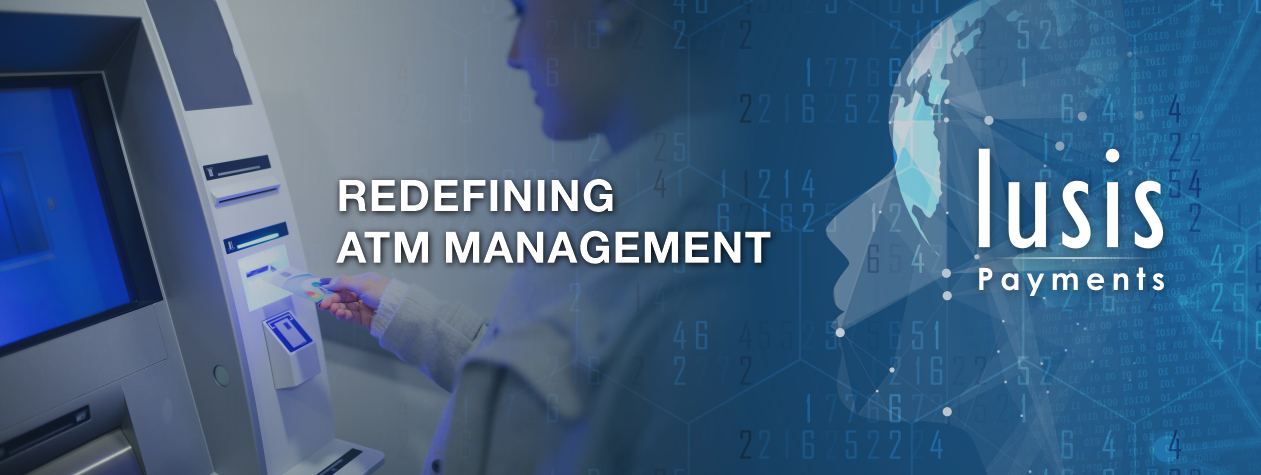|
In a bold move set to reshape the payment industry, Mastercard (NYSE: MA) and Lusis Payments have embarked on a collaborative journey. Our shared goal? To revolutionize payment solutions by offering a comprehensive suite of Mastercard specialist services to issuers, processors, and payment technology providers—all through a single API connection.
In today's fast-evolving digital economy, the complexities surrounding payment solutions have escalated, with challenges ranging from heightened fraud risks to the constant evolution of technology and data privacy issues. Recognizing these challenges, Mastercard Direct Services Access (DSA) provides a pivotal solution, offering a unified connection point to a spectrum of value-added services, digitally applied across the payment ecosystem. Leveraging Lusis' online transaction processing engine, TANGO, customers across diverse sectors, including retail, finance, and transportation, stand to benefit from expedited adoption and scalability of market leading payment services, a significant reduction in time-to-market, and simplified contracting and technology support. The partnership between Mastercard and Lusis Payments underscores a shared vision of making payments faster, smoother, and more secure. Through seamless integration, customers gain swift and seamless access to Mastercard's diverse range of services, including Security, Controls, Digital Enablement, and Loyalty services. This integration eliminates the complexities associated with fragmented access to networks, enabling customers to onboard services with unparalleled ease. Pioneering Trust and Efficiency: "At Mastercard, our mission is to reduce integration complexity and instill trust in every interaction within the digital economy," affirmed Kaushik Gopal, Executive Vice President, Cyber & Intelligence at Mastercard. The partnership with Lusis Payments underscores this commitment, paving the way for a seamless and secure access to Mastercard solutions globally. Read the entire article Revolutionizing Banking Operations: The Unmatched Appeal of Lusis Payments' TANGO Platform4/18/2024
In the fast-paced world of banking, where innovation is not just an option but a mandate, selecting the right technology partner can make or break an institution's success. Amidst this backdrop, Lusis Payments has emerged as a beacon of innovation, with its flagship product, TANGO, revolutionizing the payments landscape. Let’s delve deeper into why four of the top ten banks globally have made the strategic decision to entrust their payments infrastructure to Lusis Payments and the transformative capabilities of the TANGO platform. The Imperative for Transformation: Banks today are navigating through a myriad of challenges, from evolving customer expectations to regulatory complexities and fierce competition from fintech disruptors. In this era of digital transformation, the payments infrastructure serves as the cornerstone of banking operations, demanding agility, scalability, and robustness. Recognizing the urgency for modernization, leading banks are turning to Lusis Payments and TANGO to stay ahead of the curve and drive innovation. Unveiling TANGO's Superiority: Scalability and Performance: At the heart of TANGO lies a foundation of unmatched scalability and performance. In an era where transaction volumes are scaling exponentially, banks cannot afford bottlenecks or downtime. TANGO's architecture is meticulously crafted to handle massive transaction throughput seamlessly, ensuring optimal performance even during peak loads. Whether processing tens of thousands of transactions per second or handling complex payment types, TANGO delivers unparalleled scalability without compromise. Modularity and Flexibility: No two banks are alike, each with its own set of requirements and operational nuances. TANGO's modular micro-service design offers banks the flexibility to tailor the platform to their specific needs, seamlessly integrating with existing systems and workflows. Whether it's deploying new payment channels, complying with regulatory mandates, or enhancing fraud detection capabilities, TANGO empowers banks with the agility to adapt and innovate rapidly. Real-time Processing and Instant Payments: The era of waiting days for payments to clear is long gone. TANGO enables banks to embrace real-time processing, facilitating instant payments that meet the expectations of today's digitally savvy consumers. Whether it's peer-to-peer transfers, merchant settlements, or corporate disbursements, TANGO empowers banks to offer frictionless, real-time payment experiences while ensuring compliance with regulatory mandates. Advanced Analytics and Insights: In the age of big data, deriving actionable insights from payment data is paramount for driving informed decision-making and delivering personalized experiences. TANGO's advanced analytics capabilities leverage machine learning algorithms to analyze transaction patterns, detect anomalies, and uncover valuable insights. By harnessing the power of data, banks can gain a deeper understanding of customer behavior, mitigate risks, and capitalize on emerging trends, thereby gaining a competitive edge. Security and Compliance: With cyber threats on the rise and regulatory scrutiny intensifying, banks must prioritize security and compliance in their payments infrastructure. TANGO incorporates state-of-the-art security protocols, including robust encryption, multi-layered authentication, and comprehensive audit trails, to safeguard sensitive financial data and mitigate the risk of fraud. Moreover, TANGO's compliance module ensures adherence to global regulatory standards, providing banks with peace of mind and mitigating the risk of penalties or reputational damage. Success Stories of TANGO Adoption: The decision to embrace TANGO, especially when hosted on HPE NonStop, has yielded tangible results for banks worldwide, driving operational efficiency, enhancing customer satisfaction, and fueling growth. From accelerated transaction processing times and reduced operational costs to increased revenue opportunities and improved regulatory compliance, the impact of TANGO on HPE NonStop is evident across various facets of banking operations. In a landscape defined by relentless change and fierce competition, the choice of payments software platform is a strategic imperative for banks seeking to thrive in the digital age. Lusis Payments and its revolutionary TANGO platform have emerged as the preferred solution for top banks globally, offering unmatched scalability, flexibility, performance, and security. By harnessing the power of TANGO, banks can unlock new avenues for innovation, differentiation, and growth, positioning themselves at the forefront of the financial services industry. As the journey towards digital transformation accelerates, TANGO remains a catalyst for change, empowering banks to navigate the complexities of modern banking with confidence, agility, and resilience. In the dynamic realm of banking technology, staying ahead means embracing innovation and adaptability. Lusis Payments leads this charge with its cutting-edge ATM software solution, powered by TANGO, poised to transform the way financial institutions operate their ATM networks. With TANGO as the backbone of our solution, coupled with a robust architecture and an array of advanced features, Lusis Payments ATM Software sets a new standard for efficiency, security, and customer satisfaction in the industry.
Seamless Integration for Diverse Environments: At the core of Lusis Payments ATM Software lies TANGO, our versatile and reliable platform meticulously designed to seamlessly integrate with various vendors' hardware extensions. Whether incorporating state-of-the-art devices like NCR CSM for intelligent deposits or Wincor cash-in modules for cash recycling, TANGO ensures smooth compatibility and enhanced functionality across all ATM environments. Flexibility in Transaction Handling: Empowering financial institutions with unparalleled flexibility, our software, driven by TANGO, supports a wide spectrum of transaction types. From chip-initiated EMV transactions to magnetic strip-initiated transactions, including advanced reversal management for deposits, withdrawals, transfers, and bill payments, Lusis Payments ATM Software adapts to diverse banking needs with ease. Advanced Transaction Processing: TANGO enables advanced transaction processing capabilities, going beyond basic functionality. With customizable bill-mix algorithms, resource availability management, and dynamic templates for receipts and screen layouts, financial institutions can deliver a personalized and seamless banking experience to their customers, powered by Lusis Payments ATM Software. Insightful Monitoring and Tracking: Lusis Payments ATM Software, driven by TANGO, provides comprehensive monitoring and tracking capabilities for each terminal, empowering banks with valuable insights to optimize operations. From tracking currency-specific deposits to monitoring withdrawal trends, TANGO offers actionable data to enhance ATM performance and operational efficiency. Distinctive Competitive Advantages: Setting us apart from competitors are the unique features tailored to exceed industry standards, all powered by TANGO. Our user-friendly WebTango UI, leveraging the latest HTML5 technology, offers intuitive management and operational support. Additionally, our software's architecture supports protocol customization, enabling seamless integration with legacy systems and regional protocols. With a proven track record of converting thousands of ATMs to our Tango solution, Lusis Payments brings unparalleled expertise and reliability to every partnership. Moreover, our cash recycling feature optimizes cash management, reducing operational costs and enhancing efficiency, further solidifying Lusis Payments ATM Software as the premier choice for ATM management solutions. Lusis Payments ATM Software, powered by TANGO, is not just a solution—it's a catalyst for transformation in ATM management. With TANGO as the backbone, coupled with our commitment to innovation, adaptability, and customer-centric design, we empower financial institutions to navigate the evolving digital landscape with confidence. To learn more about how Lusis Payments ATM Software can revolutionize your banking operations, CONTACT US Pioneering Security with Exclusive Fraud Prevention Technology on the HPE NonStop Platform1/16/2024
In the dynamic landscape of digital transactions, the imperative to secure financial data has reached unprecedented heights. Lusis Payments, a frontrunner in payment software solutions, stands out as a pioneer in fraud prevention, particularly on the HPE NonStop platform. This article explores the intricate details of fraud prevention on HPE NonStop, highlighting the innovative features offered exclusively by Lusis Payments and shedding light on the unique benefits of operating on the HPE NonStop infrastructure. Fraud Prevention on the HPE NonStop Platform: The HPE NonStop platform, renowned for its reliability, scalability, and fault-tolerance, has become the platform of choice for mission-critical applications in the financial sector. Lusis Payments has strategically harnessed the strengths of this platform to develop fraud prevention solutions that seamlessly integrate with its unique architecture.
Benefits of Being on the HPE NonStop Platform:
Exclusivity with Lusis Payments: Lusis Payments proudly stands as the exclusive provider of payments fraud prevention technology on the HPE NonStop platform. With a singular focus on delivering top-notch security solutions tailored for this unique environment, Lusis Payments has solidified its position as the go-to partner for financial institutions seeking unparalleled protection against fraud. Collaboration with Lusis AI: In a testament to its commitment to innovation, Lusis Payments collaborates closely with Lusis AI, its dedicated artificial intelligence division. This collaboration is instrumental in enhancing the efficacy of fraud prevention solutions. Lusis AI's expertise in developing intelligent algorithms and predictive models contributes significantly to strengthening Lusis Payments' ability to stay ahead of evolving fraud landscapes. Additionally, it's worth noting that Lusis Payments employs the BackTest Engine (BTE), also known as the sandbox for testing. This tool ensures rigorous testing of rules before they are moved into a repository for production, effectively utilizing a fully integrated approach with TANGO for acquiring and issuing. Conclusion: As financial transactions continue to evolve, Lusis Payments and the HPE NonStop platform stand as steadfast guardians, ensuring that the future of digital payments remains secure and resilient. The combined forces of Lusis Payments' cutting-edge fraud prevention software, tailored exclusively for the HPE NonStop environment, and the inherent benefits of operating on this platform create a formidable defense against the ever-present threat of fraud. The seamless integration, fault-tolerant architecture, and scalability of both entities contribute to a secure and efficient environment for financial institutions and businesses. In this collaborative pursuit of security and innovation, Lusis Payments, as the exclusive provider of fraud prevention technology on HPE NonStop, redefines the landscape of digital transactions, setting new standards for the intersection of technology, security, and financial integrity. Dear Cherished Clients and Esteemed Partners,
As we approach the close of an extraordinary year, we are thrilled to reflect on the remarkable achievements that have defined Lusis Payments in 2023 and set the stage for an even more dynamic journey in the next 12 months. Global TANGO Expansion: Our TANGO expansion around the world has been nothing short of exhilarating, and we are poised for even greater strides in the coming year. The foundation of our success rests firmly on the shoulders of our fantastic client-base, who passionately advocate for Lusis Payments within the financial industry whenever the opportunity arises. Client-Centric Approach: We take pride in our unique approach, boasting a minimal direct sales footprint. Our triumphs are a testament to the incredible relationships we've forged with our fantastic client-base. Your loyalty and enthusiasm in promoting Lusis Payments to other financial institutions have created ripples of success that extend far beyond our initial interactions. We are truly grateful for your trust and partnership. Your support has propelled Lusis Payments to lead the way towards exciting challenges and opportunities that await us in 2024 and beyond. Empowering Transformation: While our primary focus involves aiding banks and processors in migrating from legacy platforms like BASE24, Postilion, Connex, etc., we are thrilled to share that some clients have opted to bring their payments ecosystem in-house with TANGO. This strategic move not only provides better control but also results in significant cost-savings. Versatility in Solutions: Whether it's a Cloud-based TANGO instance or a Next-Gen solution in-house, TANGO remains the hands-down choice for Payments authorization, authentication switching, transaction routing, and terminal driving across all channels. The adaptability of TANGO caters to the diverse needs of ATM, POS, Mobile, E-commerce, fraud detection, and related Issuer/Acquirer activities. International Recognition: We are honored to share that Capital Finance International (CFI.co) recently named Lusis Payments The Best Electronic Payment Systems Solution. This accolade is a testament to our bold strategies, client-centric focus, competitive pricing, technological prowess, and dedicated research. Lusis Payments Latin America Highlights: In our Latin America operations, we are delighted to welcome two outstanding additions to our team, Bruno Marques and Rodrigo Vite. Their expertise and contributions have enriched our capabilities, benefiting our clients with innovative ideas and proven functionalities. Our Mexico team has thrived, consolidating knowledge and skills, resulting in an elevated customer support experience. The opening of our new office in Mexico City symbolizes our dedication to better serve you in the region. Success Stories and Collaborations: A significant processor in the region has successfully completed its migration to TANGO, expressing satisfaction with the platform's architecture and capabilities. This success story, coupled with our participation in ESIS 2023 in Ecuador, has allowed us to engage with new customers, connect with current users, and showcase the offerings of Tango/Lusis. Currently, we are actively collaborating with several banks, processors, and retailers in the region. TANGO represents an excellent opportunity for them to refresh their business strategies, providing a new approach and proven savings. The introduction of the Tango Fraud Management Solution offers a groundbreaking way to handle fraud securely and efficiently. A Glimpse into the Future: As we close the chapter on 2023, Lusis Payments stands ready with a full portfolio of solutions, promising to navigate the ever-changing market needs in innovative ways. We look forward to a future filled with new possibilities and collaborative success. Warmest Wishes for the Holidays: In the spirit of the season, we extend our warmest wishes for a joyous Christmas and a New Year filled with prosperity and fulfillment. May the holidays bring you moments of warmth, love, and shared joy with your loved ones. Thank you for being an integral part of our journey. Here's to a Merry Christmas and a wonderful 2024 filled with continued success! Warm regards, Lusis Payments Americas |
lUSIS nEWSThe latest company and industry news from Lusis Payments. Archives
June 2024
Categories
All
|







 RSS Feed
RSS Feed